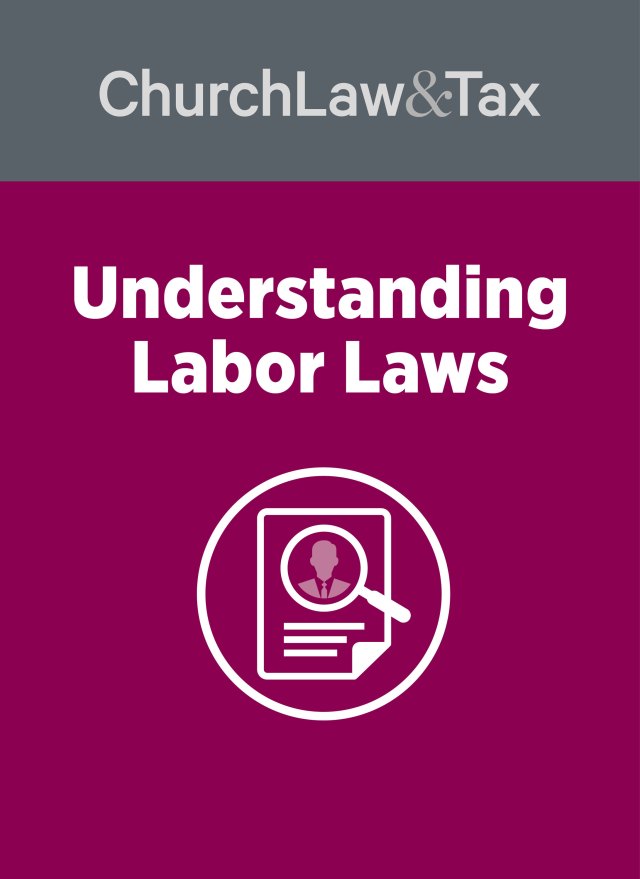• Key point.Workers Compensation All states have enacted workers compensation laws to provide benefits to employees who are injured or become ill in the course of their employment. Benefits generally are financed through insurance premiums paid by employers. Churches are subject to workers compensation laws in most states.
An Alabama court ruled that a church custodian was entitled to workers compensation benefits as a result of an injury she suffered on the job since the church “regularly employed” five or more persons as required to trigger coverage under the state workers compensation law. A church hired a woman (“Barbara”) as a custodian. Barbara was injured when she slipped and fell while stripping a floor at the church. She later filed a claim for workers compensation benefits, which a court denied on the ground that the church employed fewer than five persons. The Alabama workers compensation law specifies that it does not apply ” to an employer who regularly employs less than five employees in any one business.” At the time of Barbara’s injury the church was also paying for services from a pastor, a pianist, an organist, and a youth director. The church treated the pianist, organist, and youth director as independent contractors, issued them 1099 forms, and withheld no federal taxes. Barbara appealed the denial of workers compensation benefits. She asserted that she and the other four paid staff members at the church were employees rather than independent contractors, and so the “five employee” requirement was met. A state appeals court disagreed. It noted that the pianist was clearly an independent contractor since she was paid only when she came to a service and played the piano and was not under the supervision or control of any individual at the church. Therefore, the church was employing fewer than five employees at the time of Barbara’s injury. However, it noted that the number of church employees at the time of the injury was not the critical test, since the workers compensation statute covers employers who “regularly employ” fewer than five persons. The court noted that the term “regularly employs” does not mean “constant employment of the requisite number of persons, but rather is a function of the frequency, regularity, and duration of the occurrences in which that number is employed.” The court observed,
The record shows that the operation of the church envisioned payment for services in six different jobs: those of pastor, music director, pianist, organist, youth director, and custodian. The record also supports the conclusion that the church compensated persons for their services in at least five of those positions at the time of Barbara’s injury. Although [the pianist’s] affidavit does present evidence to support the conclusion that she was an independent contractor for the church at the time of Barbara’s injury, there is no comparable evidence in the record to support that conclusion with respect to any other person who provided services to the church. The only indication that any other person who provided services to the church might have worked as an independent contractor was [the church’s] assertion that [the organist and youth director] received compensation as independent contractors. Unlike the evidence concerning [the pianist, the status of the organist and youth director as] independent contractors is not supported by any evidence regarding the church’s control, or lack thereof, over the work performed by [them]. Such evidence is inadequate to establish that [they] were independent contractors as a matter of law. Thus, viewing the evidence in a light most favorable to Barbara, we find in the record evidence to support the conclusion that the church compensated persons who provided services as pastor, music director, pianist, organist, youth director, and custodian. Of these six positions in the church, the position of pianist was held by … an independent contractor. Although there is also evidence indicating that at least one of the other positions was not occupied at the time of Barbara’s injury, there is no evidence indicating that the church did not regularly employ a person in each of the remaining five positions. Moreover, the record does not contain substantial evidence indicating that any of the [other persons] providing services to the church worked as independent contractors.
Application. Several states have workers compensation laws limiting coverage to employers that “regularly employ” a specified number of employees. This case illustrates that churches cannot avoid coverage by treating workers as independent contractors who in reality are employees. This case also will serve as support for treating pianists as independent contractors rather than as employees who are paid only when they play for a service and are not under the supervision or control of any individual at the church. Gordon v. West Weaver Baptist Church, 2000 WL 1134589 (Ala. App. 2000).
© Copyright 2001 by Church Law & Tax Report. All rights reserved. This publication is designed to provide accurate and authoritative information in regard to the subject matter covered. It is provided with the understanding that the publisher is not engaged in rendering legal, accounting, or other professional service. If legal advice or other expert assistance is required, the services of a competent professional person should be sought. Church Law & Tax Report, PO Box 1098, Matthews, NC 28106. Reference Code: m81 c0501




